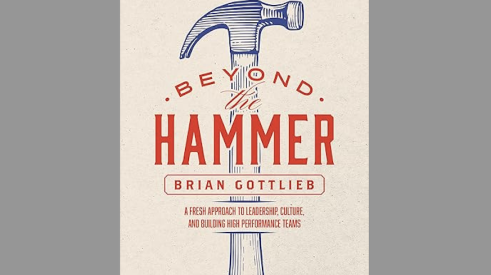Do your workers’ comp rates this year have you reaching for a martini? Believe it or not, according to Sisi Wei and Michael Grabell, at ProPublica, in an article earlier this year, U.S. employers “are paying the lowest rates for workers’ compensation insurance than at any time in the last 25 years, even as the costs of health care have increased dramatically.” Huh? Today’s rates are “still far cheaper than the rates [employers] paid in 1988,” the authors note. Nationwide, workers’ comp costs in 1988 were $3.42 per $100 paid in wages, compared with today, when the average is $1.57. Of course they vary greatly by state. The Insurance Journal publishes a map that breaks out workers’ comp rates by state, where you’ll see that California easily leads the nation (states ranked most expensive—$3.00 to $3.49—are colored dark brown, and there’s only one brown state, the Golden State). The most expensive states after California are Connecticut, New Jersey, New York, and Alaska. States where workers’ comp rates are lowest: North Dakota, Indiana, Arkansas, Virginia, and Massachusetts.
And Then There’s Roofing
Of course, if you’re in the roofing business, you’re probably laughing, crying, or re-filling the martini glass right now. Those rates are like something in a dream. That’s because workers’ comp rates in construction are a whole other animal. “In 2010, construction workers received more workers’ compensation benefits than “in all industries nationwide,” according to an article in The Construction Chart Book, published by The Center for Construction Research and Training. The article notes that “in 2011, the workers’ compensation insurance rate per $100 of payroll for roofing was $48.83 in Montana compared to just $10.66 in Indiana.” Just. A chart shows that in that year, median costs (all states) for workers’ comp for roofing work would have been about $25 per $100 of payroll costs. Medical costs “accounted for roughly 60% of the total incurred by workers’ compensation.”
“Insurance companies use a classification system to calculate Workers Compensation insurance premiums,” using a code, notes Advanced Insurance Management. So “the classification code for a clerical worker (Code 8810) should carry a significantly lower rate than the code for a roofer (Code 5551) because the odds of a roofer being injured are much higher than those of an office worker.” How much higher? Measured in dollars, the difference is 40 cents per $100 for an office worker compared to $40 per $100 per roofing worker.
Explain Why It Matters
Of course there are plenty of roofing contractors who don’t want to be bothered paying workers’ comp, and whose decision not to do so gives them a competitive advantage. Imagine knocking 40 percent off your labor cost. Legit roofing contractors build that cost into their price, and the more astute leverage it as a marketing and selling tool. Heinrichs Roofing & Siding, in Belmont, Wis., for instance, carefully explains the difference between liability insurance and workers’ compensation to the homeowners who visit its website. “Many Tri-State Area roofing contractors advertise that they are properly insured,” writes Heinrichs on its blog. “But what does that mean and how does it affect you?” The blogger explains that the 28 percent of gross wages, which is the average in that state for roofers workers’ comp, is a requirement and that the “law puts responsibility on the property owner to make sure that contractors working on their property have current workers’ compensation insurance. If they don’t, they face liability for any injuries themselves.”
How, exactly? Homeowners are responsible for “determining whether a contractor is licensed,” as is pointed out by San Jose attorney Julian Pardo de Zela, on the site Inman, an online information source for California real estate agents. In the article, which urges real estate agents to carefully vet any contractors they refer to their homeowner clients, Pardo de Zela notes that the homeowner who has hired an unlicensed contractor can be legally deemed that person’s employer. He writes: “There is a rebuttable presumption that an unlicensed person who performs work for which a license is required is an employee and not an independent contractor. The unlicensed person may claim benefits as an employee under the workers’ compensation statute. But an employee may not be covered for workers’ compensation because they have not worked a certain minimum number of hours, or because the employer has not secured appropriate insurance coverage. In that case, the worker is no longer limited to workers’ compensation for his damages. He may sue the employer (homeowner) directly for significant medical costs and a lifetime of inability to work. (Rosas v. Dishong (1998) 67 Cal. App. 4th 815.)”
On Legal Match, another real estate legal site, lawyer Ken LaMance explains it more succinctly: “One of the advantages of hiring a contractor to work on your home as opposed to a direct employee is that the contractor is responsible for any injury that occurs. However, if the contractor is unlicensed, it and its employees automatically become employees of the homeowner. Then the injured worker/employee may sue the homeowner. “ And it will be the homeowner’s turn to reach for the martini.
---
Philadelphia-based freelance writer Jim Cory specializes in covering the remodeling and home improvement industry. Reach him with comments or story ideas at coryjim@earthlink.net.
Workers’ compensation insurance is a piddling, though required, expense for businesses—except when it comes to construction.
Add new comment
Related Stories
3 Areas Successful Remodelers Focus On
Industry advisor Mark Richardson shares what separates the losing from the winning in today’s market
Peppermill Finish
The Neal’s Way Means Putting People First
For Neal’s Design Remodel, company culture is more than values on a wall. It’s everything.
Selling Your Company to Your Team
From company valuation to terms of the transfer, here’s a look at how three different remodelers made the deal work
Brian Gottlieb Receives Remodeling Mastery Award
Presented by industry icon, Mark Richardson, the award celebrated Gottlieb’s extraordinary impact on remodeling
What's Beyond the Hammer?
Working with Brian Gottlieb on the book Beyond the Hammer provided a masterclass on how to build an aligned team
Real AI Applications For Remodelers
Tech-forward remodeler Michael Anschel shares how he uses artificial intelligence in his business.
How to Eliminate Boring, Languishing Meetings
Leff Design Build ensures maximum productivity and efficiency through these straightforward methods
5 Counterintuitive Strategies to Improve Your Business
Follow these strategies to inspire employees, instill trust, and beat the competition
Couple Act As Much More Than General Contractors
How LBR Partners uplifts and educates their Spanish-speaking trade partners













